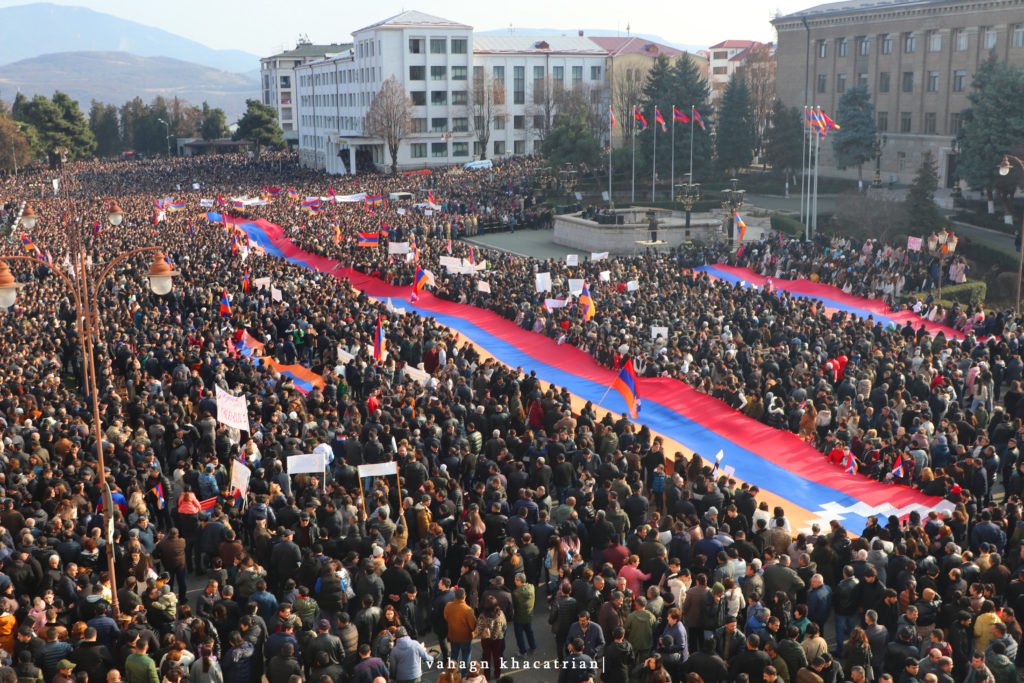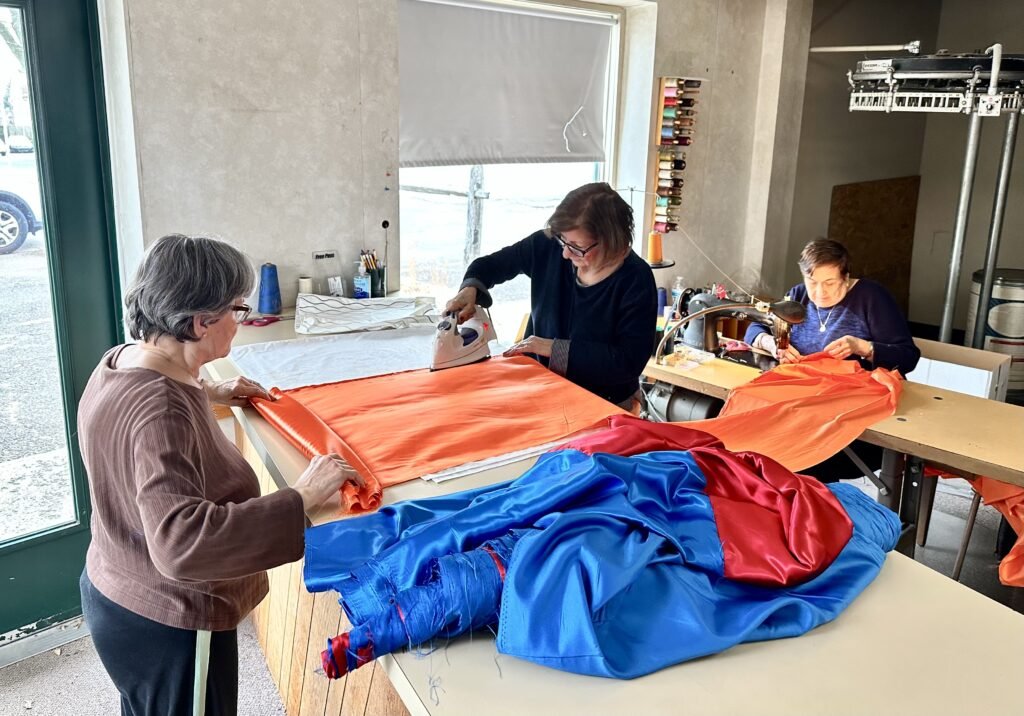Red, blue and orange bolts of cloth at various metro Philadelphia JoAnn fabric stores were recently transformed into a 30-yard-long Armenian tricolor banner through the work of four women who accepted the challenge to create the symbol of Armenian freedom and resistance for last month’s Armenian Revolutionary Federation (ARF) Eastern Region protest to cut US military aid to Azerbaijan.
The idea to include a tricolor banner at the February 2 Washington, DC protest was inspired by recent mobilizations in Artsakh and Armenia featuring yards-long banners of red, blue and orange, sewn together and lifted toward the sky by demonstrators to put the Aliyev regime and its aiders and abettors on notice that efforts to strip Artsakh’s people of their protected self-determination rights will be resisted.

ARF Central Committee member Sevag Shirozian volunteered to investigate the price and logistics of ordering the tricolor for the protest from a commercial vendor and concluded that there might be a better way to avoid cost and timing issues if he turned to a reliable contact for the work: his wife Taline.
“I was upstairs in my bedroom,” Taline recalled. “He texted me the information and asked, ‘Can we do this?’” When Sevag informed Taline of the desired size of the banner envisioned, her first reaction was, “No, what are you talking about?”
Her second reaction was, “Let me think about it.”
Taline conducted her own online investigation of fabric options and drove to a local fabric store to see and feel the cloth. She settled on a satin-looking polyester material and informed her husband, “Okay, maybe with your mom and aunts, I can do this. If we can do something, let’s do it.”
With less than a week to work on the banner, Taline began the fabric gathering process, spending nearly six hours driving to five JoAnn fabric stores to amass the quantity of red, blue and orange cloth needed for the project.
With her mother-in-law Anahid Shirozian, Taline spent an evening sizing and cutting the fabric. The following day, they went to their old dry cleaning and alteration store to use the industrial sewing machine that Anahid had operated for years when the business was still open.
“At the beginning, it was just me and mom,” said Taline. “Then, the horkours heard about the process and said they wanted to help too.” Mary Shirozian Hatsakordzian and Vartouhi Shirozian Koumroukian joined Taline and Anahid for a six-hour day to start sewing the red, blue and orange cloth panels together. A final eight-hour day was spent at the shop to finish sewing the banner, and then pressing and winding it onto a roller for safe transport to Washington, DC. Taline estimated that the entire banner project took 20 hours to complete.
“From the first minute, my answer to help was ‘yes,’” said Anahid Shirozian, remembering her daughter-in-law’s call for help. “I respect the flag. This is my responsibility. We still have the store and the machines, so we were able to go there and do the work. I knew it was being used for an important purpose.”

“My sisters-in-law came to help because we needed more than two people for the ironing and folding,” she continued. “It wasn’t work for just two people. The flag has always had an important part in our lives and we have always displayed it in our home. It is the same for my children and grandchildren. It was a great honor to do this work. It was a joy.”
At the protest site outside the US Capitol, Taline stood before the gathering crowd and watched protesters slowly unwind the tricolor banner and take their place to hold it front and center.
“From the first moment, I looked at it and told them not to let it hit the ground,” she said. “I think it was new to see a banner of this size for the people who were there. It was the first time they were holding something like that.”
“We see in Armenia that type of long flag, but we don’t see it here,” added Koumroukian. “We were very glad to help with this. Taline and Anahid were brave to take on this project, and we were there to help.”

The impact of seeing the finished product of their labor also deeply touched the four women, because the protest was occurring on the death anniversary of Kevork Shirozian – their father-in-law, husband or brother – who died unexpectedly two years ago.
“I thought, ‘My brother loved the flag,’” Hatsakordzian recalled. “When he got sick, it hurt me so much. I thought, ‘I should do this in his memory.’ That’s when I decided that whatever expense there was, I would donate it.”
Hatsakordzian’s promise to herself was fulfilled when her nephew Sevag recently delivered his aunt’s $1,000 check to the ARF Central Committee office without fanfare.
“I said I would go and stand in his place in Washington,” she added, remembering the cold day in February at the protest.
“I’m 80 years old, and I wonder now, ‘How did we do that work?’ But at the protest, it was a proud moment to see the tricolor being used, and I was satisfied. My heart was at peace that I could help.”



Be the first to comment